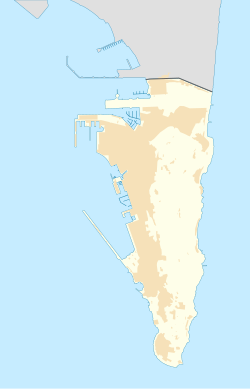Description
Hyaena Cave is one of four caves which together make up the Gorham's Cave complex which has been nominated to become a UNESCO World Heritage Site, the others being Vanguard, Gorham's and Bennett's Cave. [2] Hyaena Cave, like the other three in the complex, has been gradually filled with sand that has been blown in through the entrance over thousands of years. These sands remain where they fall and over time they build up to remarkable depths. In the case of Vanguard Cave and Gorham's Cave the deposits are both more than seventeen metres deep. The sands record the environment from 15,000 to 55,000 years ago when the coastline was very different. In the past the sea was over 4.5 kilometres (2.8 miles) away from the caves whereas it is now very close. [3]
This page is based on this
Wikipedia article Text is available under the
CC BY-SA 4.0 license; additional terms may apply.
Images, videos and audio are available under their respective licenses.
